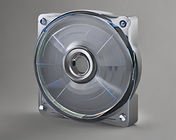Basic Guide for Recovering Deleted Files
Terrible things can happen if you delete files by accident. Sometimes, you accidentally erase an earlier file version; restoring it is the only way to do so. The good news is that various ways are available to return the information you lost on your computer. Some are paid, while others are free of charge. Deleted files can often be recovered using these four methods.
1-Verify the Recycle Bin
Retrieve the Document
To better navigate the recycling bin and locate the desired file, consider sorting them by date.
File Restoration
When you locate the relevant file, right-click on the record to bring up a menu where you may choose the “Restore” option. This method can restore the file to its original location after deletion. Like in the following section, you can use the search field to enter the file name if you need help finding where it was.
2-Go to the Menu Bar
Locate Windows by clicking on its icon in the lower left corner. The search box is available to help you locate any files you seek. If you need to find a file hidden in an unusual location on your computer, this function will scan every folder on your hard drive.
3-Put Data Recovery Software to Work
Software vendors offer apps that can assist you in recovering deleted files if your search using native tools fails.
Recover Lost Files on Windows
 You can easily get Windows File Recovery for free from the Microsoft Store. Regular and Extensive search modes are available. An Administrator must grant this software access to the hard drive before it can be launched; doing so opens the Command Prompt.
You can easily get Windows File Recovery for free from the Microsoft Store. Regular and Extensive search modes are available. An Administrator must grant this software access to the hard drive before it can be launched; doing so opens the Command Prompt.
Before you use Windows File Recovery, you should learn where the files are coming from and where they are going. Using the correct mode is crucial; for example, regular search can recover freshly erased files, while extensive search can recover corrupted or long-lost files.
4-Collaborate with a Data Recovery Firm
Hire a data recovery service or even a remote it support for small business if you’re dealing with an overwhelming number of files or if your services aren’t cutting it. If you have corrupted files or data you thought was permanently lost, these professionals can help you recover it.
You can compare price plans and discover their capabilities after doing some research on Google or asking your coworkers for a referral. A more compact service may be required for less complex file recovery needs, such as those involving Microsoft Word documents or Excel spreadsheets. You might want to look at a more robust service if you’re dealing with bigger files for things like photography or graphic design.
Conclusion
It is critical to have a strategy ready for file recovery, particularly for owners of small and medium-sized businesses. From employee data to a firm logo from years past, archival information could be useful in a pinch. Important files could also be accidentally deleted at the worst possible moment due to human error. Get the necessary equipment ready in case of an emergency to safeguard your possessions.

